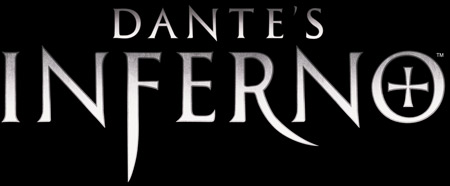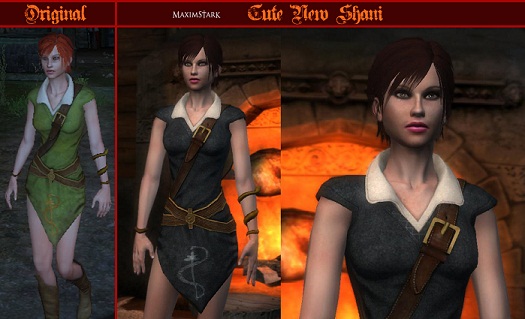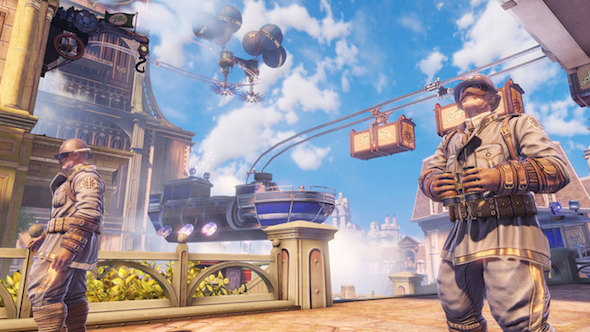

Like the excellent Dawn of Sorrow and Portrait of Ruin before it, Order of Ecclesia drops you into a gothic realm on the brink of disaster. Lord Dracula is about to make a not-so-surprising return from the dead and it’s up to you to put him back in his grave by collecting new magical powers and slaying his blood-guzzling henchmonsters. You start off with next to nothing, unable to access large portions of the world map, but as you play and acquire abilities, the previously unreachable locations relent and let you take whatever other goodies they might be hiding.
Forgive us (and Konami) if that description sounds overly familiar. It’s true though, that Ecclesia is ostensibly the same monster-hunting experience we’ve enjoyed since 1997’s Symphony of the Night. However, there are several alterations that make it totally worth playing even if you tired of this formula years ago, first and foremost of which is the Glyph system.
Heroine Shanoa gets her powers by absorbing floating symbols called Glyphs. Every attack she has in the game, from swords to hammers to lightning spells, comes from a Glyph she steals from an enemy. Example: a rapier-wielding skeleton will drop the Rapier Glyph, while a fire-chucking demon leaves behind a flame-based Glyph. The more you use them, and the more you absorb, the stronger you become. At first this sounds awfully close to the soul-sucking ability in Dawn of Sorrow, but there every enemy had a power to release – in Ecclesia, only certain enemies and bosses give you anything for your trouble. This simultaneously makes searching for new powers exciting and annoying; it’s common to play for extended periods of time and not find a new power simply because the enemy that drops it is hard to find and has a low drop rate. We felt this mix of acquiring new powers while strengthening old ones made was habit forming, but if you don’t like a bit of grinding it could get old quick.
There are three customizable slots that can hold three Glyphs each. This lets you create a battle setup for any occurrence – if a hammer-resistant lizard man is giving you trouble, activate your blade setup and slice him down. Similarly, if you’re facing a boss that’s killing you over and over again, try mixing and matching powers until you find a combination that works. There’s usually only one truly effective means of attack, but that period of discovery makes each boss encounter more tense and challenging than most console bosses today. Still, we have two small complaints about the enemies themselves – firstly, there are a lot of reused creatures from past games, and second, a lot of them bully Shanoa around by standing right on top of her, getting in a lot of cheap hits while you’re trying to turn around.
Anyway, we love Shanoa’s powers, we love how she gets the powers, and strangely enough we love where she uses said powers. Previous Castlevanias kept the action inside Dracula’s castle; Portrait of Ruin took place there but let you explore new areas the series hadn’t really touched before via a series of portal-paintings. Ecclesia does this for real, taking place completely outside of the castle, sending Shanoa through mountains, graphically impressive storms, a bone-laden cave, the list goes on. Unlike the previous games’ “wander around” idea, you have a straightforward path to follow for a good chunk of the game. Once you uncover the truth behind Shanoa’s absorption abilities, and why she lost her memories and emotions, Dracula’s enormous castle returns as a last-minute treat for fans.
One of our favorite additions is the town Wygol. At first it’s deserted, but as you travel the surrounding areas you’ll find the villagers wrapped in Glyphs, ready to be freed and sent home. Once there, they take on typical villager roles like merchant, blacksmith and mayor, slowly offering you more and better goods as you complete varied and genuinely interesting side quests; we loved snapping pictures of rare enemies and recording sounds for a struggling musician. Plus the whole idea of restoring towns and hoofing it through the wilderness brought back memories of the NES favorite, Castlevania II: Simon’s Quest. There’s even a specific shout-out in the dialogue when Shanoa enters Drac’s castle, a little something about vanquishing the horrible night.
Ecclesia bundles a few online modes into its already generous single player adventure, including an online store for buying and selling items, and a trio of versus race courses in which you compete against another player for best time, hearts and enemies killed. Our time with the latter was laggy and a little confusing. Honestly online’s never been the focus of the DS entries, so we’re not surprised to see it less than exceptional yet again.
Ignoring the Wi-Fi Connection stuff, there’s still so much to see and do it’s hard to imagine gamers not absolutely devouring all the hidden details and ultra-rare items just to say “I did it.” If you’ve been on the fence or unimpressed with the games so far, try Ecclesia. Its build-a-town mini quest, exceptional animation, surprisingly interesting story and predictably catchy music could still convert you.
Nov 3, 2008




 List of All Weapons in Star Wars Battlefront
List of All Weapons in Star Wars Battlefront How to get more Grand Theft Auto V Cash, Buy property and Stock Market and more, Tips and Tricks Guide
How to get more Grand Theft Auto V Cash, Buy property and Stock Market and more, Tips and Tricks Guide One Piece: Pirate Warriors 3 Guide - How to Trigger All Treasure Events
One Piece: Pirate Warriors 3 Guide - How to Trigger All Treasure Events Rare Replay: top 5 classic games
Rare Replay: top 5 classic games 6 Games And Apps On Sale This Black Friday
6 Games And Apps On Sale This Black Friday